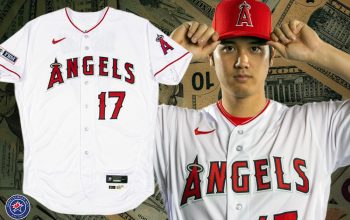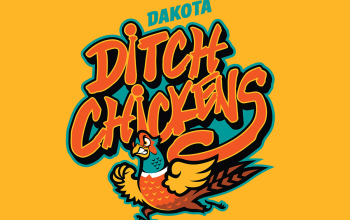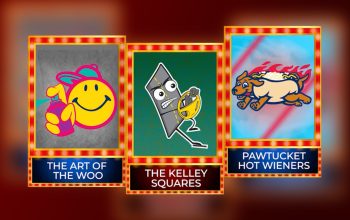
Prairie dogs are tubby rodents that serve as food for basically every predator: hawks, coyotes, snakes, semi-trucks, you name it. So what would make a baseball team in a rough-and-tumble part of the country like western Texas want to adopt them as the foundation for their brand?
That question was front and center before the 2019 season, when the Amarillo Sod Poodles made their surprisingly successful debut in the Texas League. It turns out that sod poodles—a nickname given to prairies dogs by early European settlers in western Texas—have a lot in common with the people of Amarillo.
“We wanted to find out what was most important to the people of Amarillo,” said the team’s president and general manager Tony Ensor. “They described themselves through our focus groups as a very welcoming community. The people here are very genuine, they’re tough of mind, they really have the pioneer spirit. When you talk about how self-sufficient and independent and family-oriented the people of Amarillo are, these are all ways they described themselves. Funny thing is, when we were going through the names, when you look up the definition of a prairie dog, it matched almost equally how people of Amarillo described themselves.”

Jason Klein of Brandiose, the firm responsible for the brand, recalls a conversation during a focus group in which a man said repeatedly that the people of Amarillo like to do things their way and that they have a settler’s mentality. When he pressed for details, Klein describes it as being like a lesson in anthropology.
Klein explains: “He said, ‘you’ve got to understand that when we were settling out west, in west Texas, the early settlers of Amarillo, all we had was each other. If something goes wrong, the cavalry’s not coming for us. We’re out here on an island.’ And I said, ‘Okay, keep going.’ He said, ‘So, this idea that family is super important, it’s not just hyperbole. Our survival out in the middle of nowhere was based on assimilation. We all had to be on the same page.’”
Conversations like that during their early brainstorming sessions led the team to the idea of prairie dogs, which is a boring name for a baseball team, so they went with Sod Poodles instead. (To confirm the veracity of that unusual nickname, the team reached out to prairie dog expert John Hoogland, a behavioral ecologist with the University of Maryland. “He was obviously enthusiastic about it,” Klein said.)
“We were hot on the idea of the prairie dog as a metaphor,” Klein said. “They look out for each other, somebody’s always on watch, they’re fiercely protective, they’re very tribal. It really hit all the notes the community members were explaining.”

It’s no surprise that people in that part of the country might compare themselves to prairie dogs. These days, the animal, ubiquitous in the area, can be found in towns spreading across up to 1,000 acres—which sounds like a lot until you learn from Texas Parks & Wildlife that before their habitat started disappearing, one prairie dog town of more than 400 million inhabitants encompassed 25,000 square miles.
It’s easy to pick on prairie dogs—they’re chunky and skittish and cutesy—but they have a certain amount going for them.
“The sod poodle is a very smart animal,” Ensor said. “Their quarters that they live in are separated into different rooms. For instance, they have an eating room, they have a birthing room, different sleeping quarters, they have restrooms, they have the most complex underground mammal communication of any animal out there.” (I couldn’t help but note while I was listening to Ensor describe prairie dog towns that they sound a lot like minor league baseball clubhouses.)

The fact that prairie dog communities are called towns contributed to the name of their ballpark, Hodgetown, which is named in part for prominent local community member and Amarillo Globe-News Man of the Year Jerry Hodge, and in part for prairie dogs.
“When the name of the ballpark came up, [Brandiose partner Casey White] and I were like, we’ve got to call it a town!” Klein said. “Whatever the name of that ballpark was going to be it was going to have ‘town’ in it as a reference to prairie dogs.”

Another association with prairie dogs, perhaps because so many other animals eat them, makes it appropriate as a team name: “When you think about a prairie dog, when you think about a sod poodle, they’re kind of the underdog,” Ensor said. “I really think our players love that role. They love the identity of being the underdog.” (According to Ensor, the players particularly enjoy a logo the team calls “Quickdraw.”)
Ensor believes that mentality and its adoption by the larger Amarillo community translated to success on the field. The Sod Poodles became the first team to win the Texas League championship in their inaugural season.
“They were not going to come back with anything other than a championship because of that connection they have with the community,” Ensor said, “and all that connection was made possible by the name, by the logo, by the struggle that it took to create this brand, to get this name and this logo over the hump. All that work and that journey the community went with us on, I think that all played a part in the storybook of a season we had.”
Specific elements of the design center around a character that Klein describes as John Wayne, but a prairie dog.

“He’s the hero of the town, so he has the white cowboy hat,” Klein said. “We knew the cowboy hat on the prairie dog would be sort of humorous minor league baseball fun.”
The colors and font derive from Texas’s state flag, a famous highway that cuts through town, and an architectural style from the early 20th century.

“We wanted to do Texas colors, and we wanted to do Route 66 colors. Obviously Amarillo is like a 1950s gold. We put a Route 66 electric blue in there,” Klein said. “You’ll see the Amarillo font is deco because of the pueblo deco architecture.”
The Sod Poodles had a successful season on and off the field in 2019. In addition to their league championship, they were named the Texas League’s Organization of the Year, their manager won Texas League Manager of the Year, they sold merchandise in six countries, and their brand and ballpark won accolades from Fox Sports MLB and Ballpark Digest respectively.
“Our goal right from the very beginning was to create an iconic identity that appealed to kids and to families and is really like no other in the country,” Ensor said. “Our Sod Poodle brand symbolizes a mark, a logo, an idea that really can’t be ignored.”
Last summer, I was sitting at a blackjack table in Las Vegas when a burly gentleman took an empty seat next to me. I glanced at his ballcap, as I do any time I see anyone wearing a ballcap, and was pleasantly startled to see the familiar grimace of Amarillo’s Sod Poodle. I commented on the cap, and received a Texas-sized handshake and smile.
If they wanted to create a brand that can’t be ignored, I think they succeeded.











